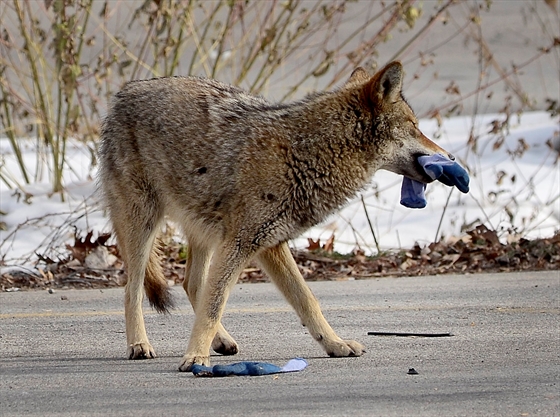

Sound:Both species use howling for long distance communication.Coyotes tend to have a bouncier, punctuated trot due to their shorter stature. Gait: When moving, wolves tend to "trot" with a smoother gait and longer stride.Wolf tracks are large, usually exceeding 4 inches from front to back (larger than an adult human's palm) whereas coyote tracks are usually less than 3 inches long. Tracks:Tracks are more commonly observed than the creatures themselves, and can be distinguished by size.Coyotes are exclusively gray or tan in color. Coloring: Most wolves are either light grayish or black, and can lighten toward white or even "blue" when older (5-8 years old).

In the dog world, wolves would be similar to a streamlined Saint Bernard while coyotes would be more comparable to a border collie in body size. Coyotes usually weigh around 30 pounds and stand less than 2 feet at the shoulder. Size: Wyoming gray wolves weigh around 100 pounds, stand 2-3 feet tall, and have larger and more robust bodies than coyotes.Habitat: Gray wolves primarily inhabit forested mountain regions in northwest Wyoming whereas coyotes can be found in all habitats throughout the state.Here are some of the key differences that can help you figure out which you saw: Gray wolves and coyotes are the largest of the five canid (dog-like) species found in Wyoming and are easily distinguishable in most circumstances.


 0 kommentar(er)
0 kommentar(er)
